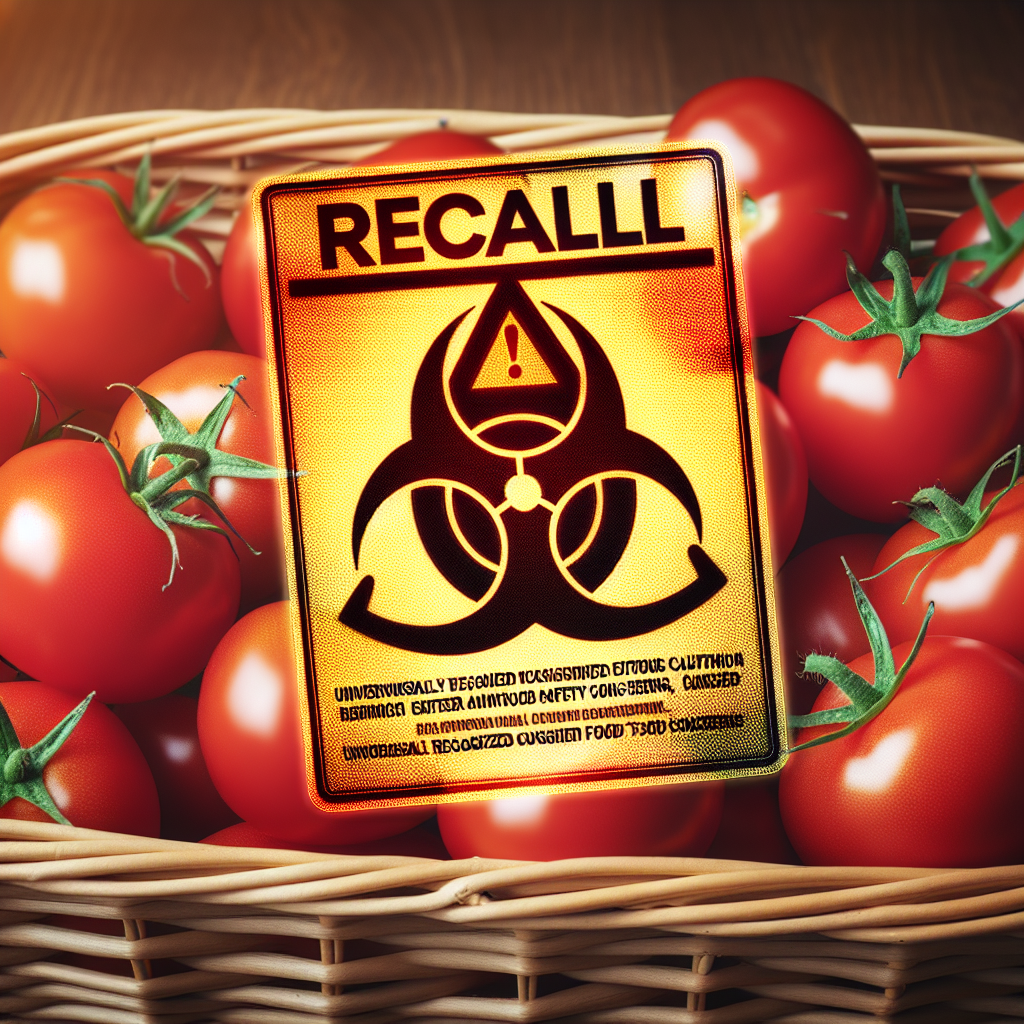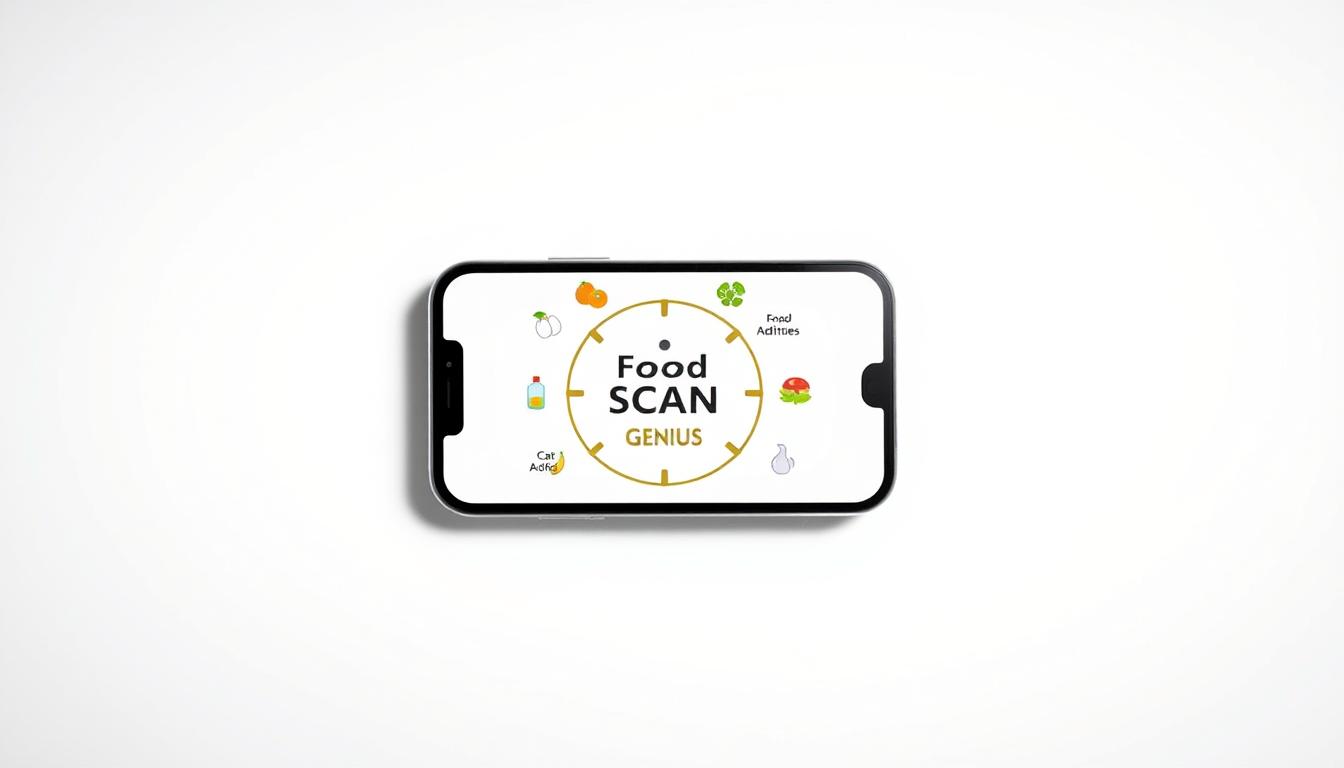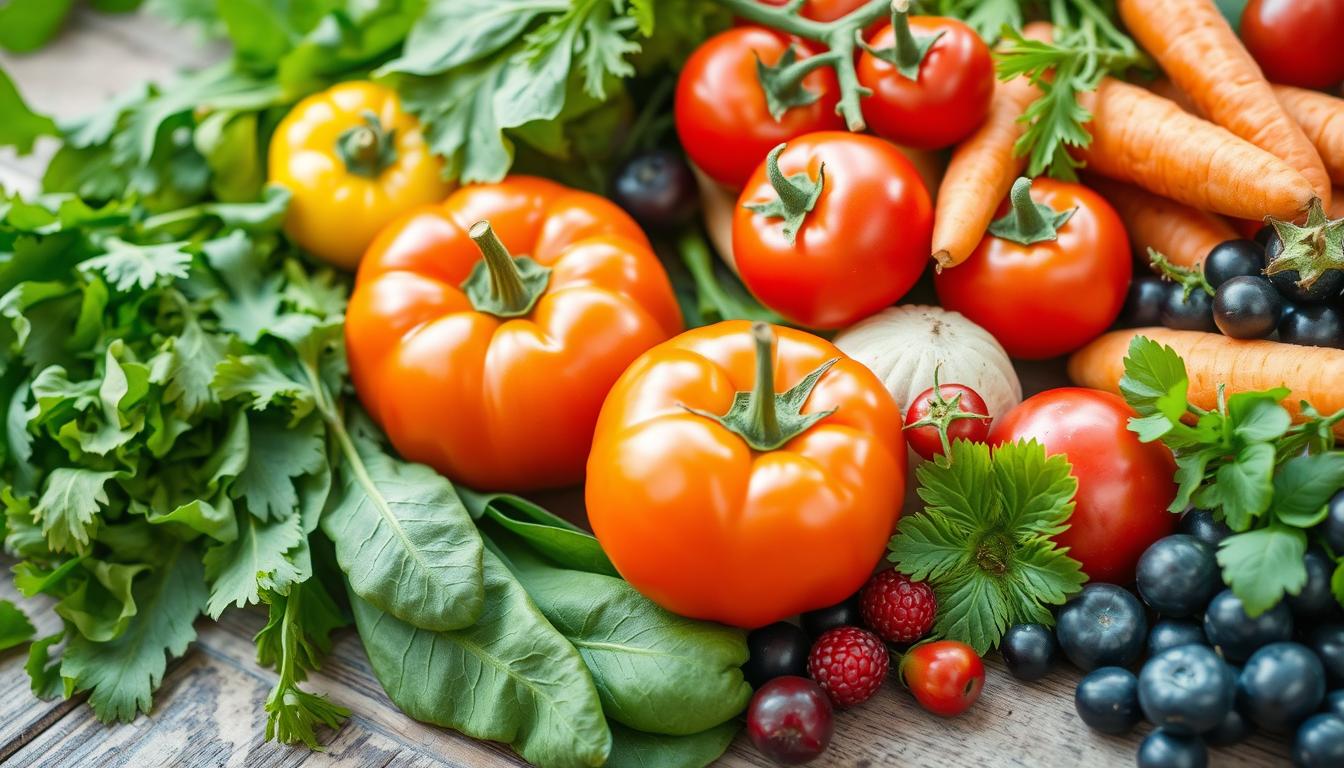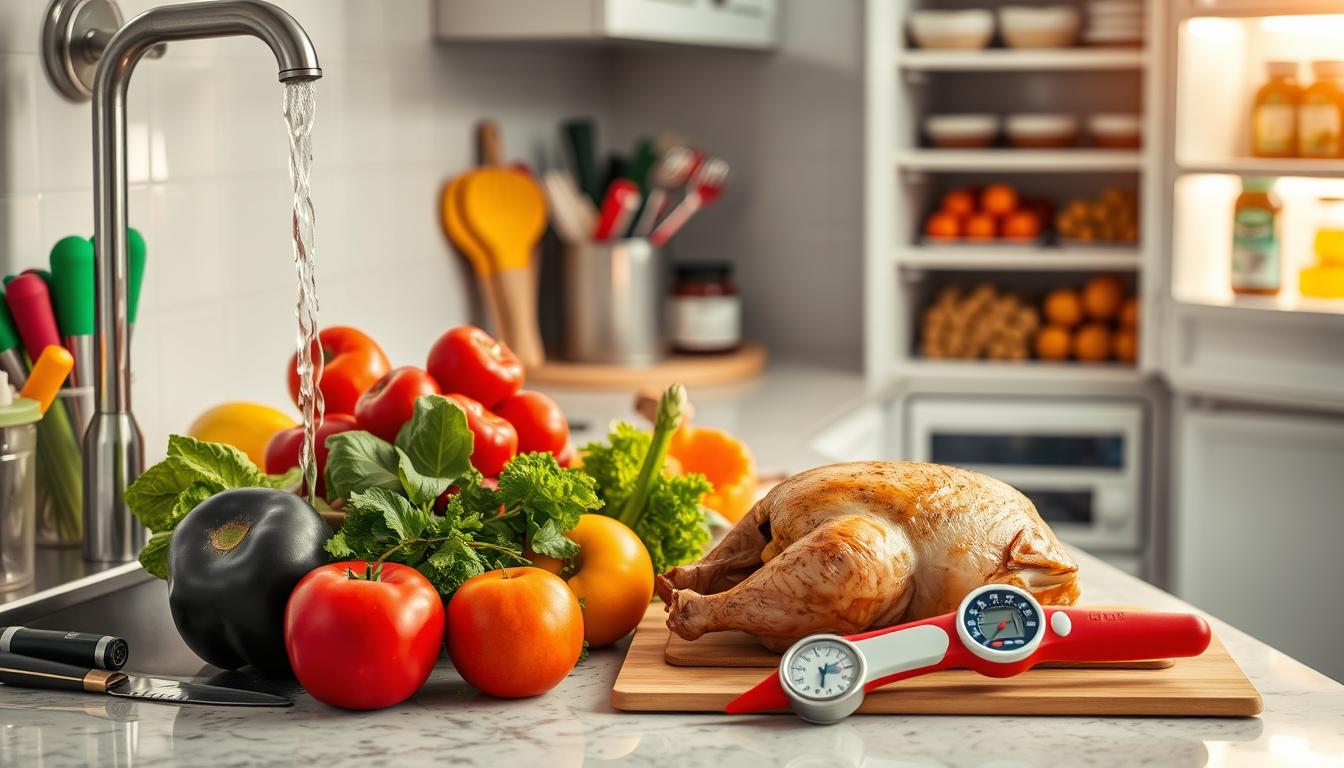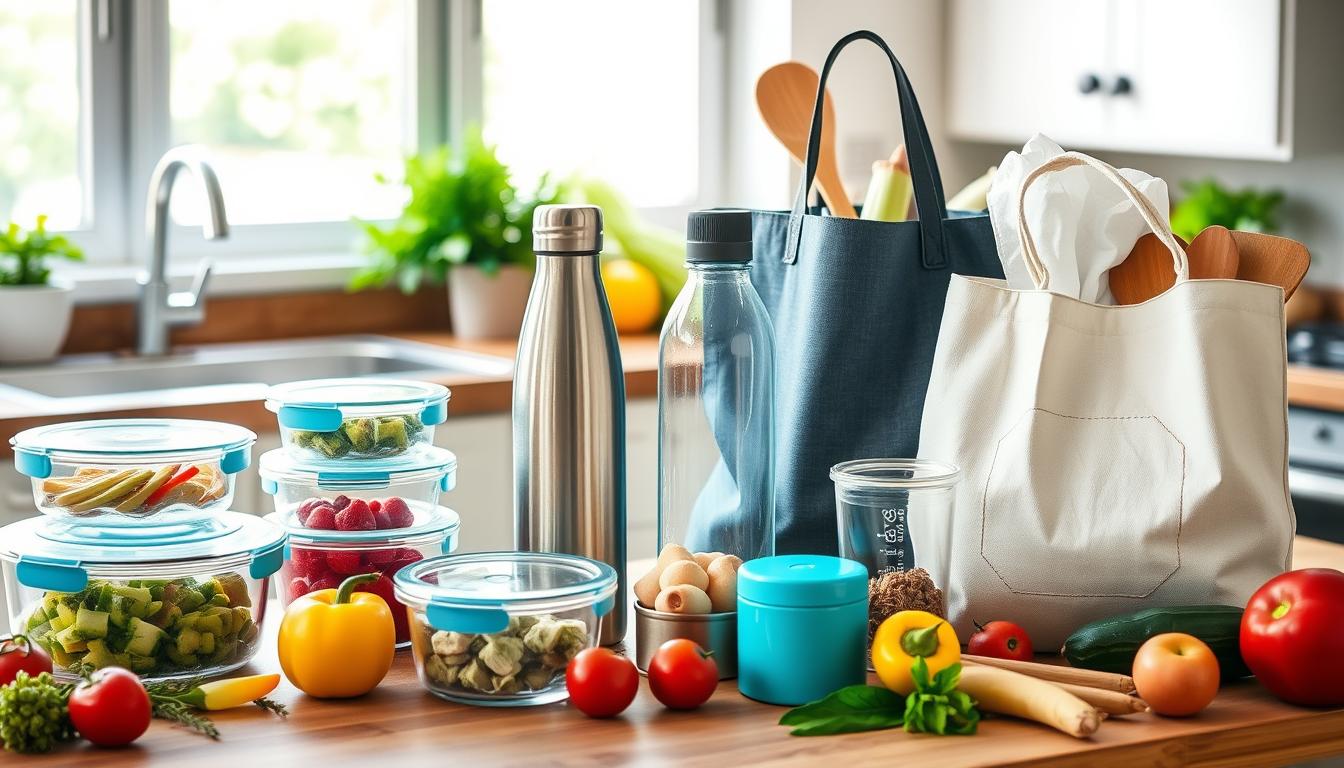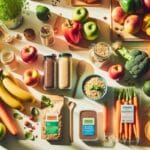Discover how a simple 150-minute weekly activity can reduce prostate cancer risk, according to new findings from Surrey Live.
Amid listeria outbreak, Southland company pulls its food from shelves – AOL.com
Southland recalls products amid listeria outbreak, prioritizing consumer safety. Get the latest updates and food safety tips from industry experts.
Simple dietary change could lower your risk of colon cancer, study says – Fox News
Discover how a simple dietary change may reduce your risk of colon cancer, according to a new study. Learn actionable tips for a healthier future.
Tomatoes Recalled For Potentially Deadly Salmonella Contamination In 11 States – AOL.com
Tomatoes recalled in 11 states due to potentially deadly salmonella contamination. Learn how to stay safe and protect your family from this outbreak.
Learn how soy allergy impacts vegan meat lovers. Get medical insights, practical tips, and discover how Food Scan Genius helps you avoid hidden soy in plant-based products.
A diverse selection of vegan meat substitutes (burgers, sausages, nuggets) on a wooden board, with a smartphone scanning a barcode labeled “Contains Soy.”
USDA issues voluntary recall of Trader Joe’s salad product due to undeclared milk allergen – Northern Kentucky Tribune
USDA Voluntary Recall of Trader Joe’s Salad Due to Undeclared Milk Allergen According to the Northern Kentucky Tribune, the USDA has issued a voluntary recall of a Trader Joe’s salad product after discovering undeclared milk on the label. This Trader Joe’s salad recall affects individuals with milk allergies and underscores the importance of accurate labeling. Introduction Food allergies affect up to 8% of children and 4% of adults in the U.S., according to the CDC. Undeclared allergens can trigger severe reactions, including anaphylaxis. In early June 2024, Trader Joe’s initiated a voluntary recall for its “Harvest Salad Kit” due to undeclared milk ingredients. While no illnesses have been reported so far, the recall aims to protect consumers with dairy intolerance and allergies. This blog post offers a comprehensive overview of the Trader Joe’s salad recall, details on milk allergens, medical insights, practical management tips, and the role of tools like Food Scan Genius in preventing accidental exposure. Stay informed and empowered to keep yourself and loved ones safe. Key Takeaways The USDA recall affects Trader Joe’s Harvest Salad Kit due to undeclared milk. Milk allergies can cause severe reactions; immediate action is vital. Use scanning apps like Food Scan Genius to detect hidden allergens. Consult authoritative sources: Mayo Clinic, FARE. Report symptoms and seek medical help if exposed. Background Context on Milk Allergies and Trader Joe’s Salad Recall Milk allergy, one of the most common food allergies in children, involves an immune response to milk proteins such as casein and whey. Symptoms range from hives and digestive distress to life-threatening anaphylaxis. The USDA voluntary recall, announced on June 5, 2024, covers Trader Joe’s Harvest Salad Kit with the following details: Recall Details for Trader Joe’s Harvest Salad Kit Product Size Lot Code Undeclared Allergen Best By Date Harvest Salad Kit 12 oz (340 g) Lot 12345 Milk 06/15/2024 Trader Joe’s communicated the recall via its website and in-store notices, urging customers to stop consumption and return the product for a full refund. Understanding labeling laws and allergen statements is crucial. The Food Allergen Labeling and Consumer Protection Act (FALCPA) mandates clear disclosure of the “Big Eight” allergens, including milk. This recall highlights potential gaps in quality control. Medical and Scientific Explanation Milk allergy results from the immune system mistaking milk proteins for harmful invaders. Upon exposure, immunoglobulin E (IgE) antibodies trigger the release of histamine and other mediators. Common Symptoms of Milk Allergy Skin reactions: hives, eczema Gastrointestinal issues: nausea, vomiting, diarrhea Respiratory problems: wheezing, nasal congestion Anaphylaxis: may include throat swelling, difficulty breathing, drop in blood pressure Studies show that approximately 80% of children outgrow milk allergy by age 16, but adults can develop persistent allergies. For the latest research on immunotherapy and desensitization, refer to the NIH. Diagnosis and Testing Skin Prick Test: Small allergen extracts are introduced under the skin. Blood Test (Specific IgE): Measures IgE antibodies to milk proteins. Oral Food Challenge: Conducted under medical supervision. Early and accurate diagnosis, guided by a board-certified allergist, is vital to prevent accidental exposures such as the Trader Joe’s salad recall. Impact on Individuals with Food Allergies Food allergy recalls like the Trader Joe’s salad recall can provoke anxiety and disrupt daily routines. For many families, school lunches and office meals rely on trust in labels. Key impacts include: Emotional stress: fear of unknown ingredients Financial burden: wasted food and medical costs Social limitations: avoiding shared meals In a survey by FARE, 72% of respondents reported anxiety about dining out or eating pre-packaged foods. The Trader Joe’s incident underscores the need for vigilance and reliable information. Using tools like Food Scan Genius, which scans barcodes and ingredients lists to flag allergens, can reduce the risk of accidental ingestion and restore consumer confidence. Practical Advice for Managing Milk Allergy Managing milk allergies involves careful label reading, meal planning, and emergency preparedness. Below are actionable steps to navigate the Trader Joe’s salad recall and beyond. 1. Check and Cross-Check Labels Always read ingredient lists and allergen statements. Confirm recall lot codes on the USDA website or Trader Joe’s recall page. Use Food Scan Genius to verify products in real time. 2. Stock Allergen-Free Alternatives Opt for certified dairy-free salad kits. Prepare homemade salads with known ingredients. Label leftovers clearly to avoid mix-ups. 3. Prepare for Emergencies Carry two epinephrine auto-injectors per FDA guidelines. Wear medical identification jewelry naming “milk allergy.” Educate friends, family, and caretakers on emergency protocols. 4. Consult Healthcare Professionals Regular follow-ups with an allergist. Discuss oral immunotherapy (OIT) trials if eligible. Access reliable resources: FARE, Mayo Clinic. Related Food Allergy Research and Developments Innovations in food allergy treatment and detection offer hope for those affected by milk and other allergens. 1. Oral Immunotherapy (OIT) OIT involves gradually increasing exposure to allergens under medical supervision to build tolerance. A recent NIH-funded trial reported promising results for milk desensitization. 2. Epicutaneous Immunotherapy Patch-based therapy introduces allergens through the skin, stimulating immune tolerance with fewer side effects. 3. Advanced Allergen Detection Apps like Food Scan Genius now integrate AI to analyze ingredients lists and cross-reference recall databases in seconds. 4. Novel Therapies Biologic drugs targeting molecular pathways aim to reduce severe reactions. Ongoing clinical trials may expand options for milk-allergic individuals. Resources and Support Options Food Allergy Research & Education (FARE) – Education, support communities CDC Food Allergies – Guidelines, statistics Mayo Clinic – Clinical information FDA Food Safety Education – Labeling regulations Frequently Asked Questions What products are included in the Trader Joe’s salad recall? The recall covers the 12 oz Harvest Salad Kit, Lot Code 12345, Best By 06/15/2024, due to undeclared milk. What should I do if I have a milk allergy and purchased this salad? Discard the product or return it to any Trader Joe’s for a full refund. Contact your healthcare provider if you experience symptoms. How can I stay informed about future recalls? Sign up for USDA and FDA recall notifications, and use apps like Food Scan Genius for real-time alerts. Can I outgrow
Easily Identify Food Additives with This Handy Scanner App
Discover harmful ingredients instantly with a food additive scanner that decodes E-numbers and alerts you to potentially dangerous substances in your groceries and packaged foods
Natural Foods Without Synthetic Additives – Pure Eating
Did you know the average American eats over 150 pounds of synthetic additives yearly? These artificial substances in our processed foods can harm our health. But, more people are choosing natural foods without these additives. Welcome to pure eating, where we focus on whole, unaltered ingredients that are good for us and taste great. In this guide, we’ll explore natural foods deeply. We’ll look at the big differences between synthetic and natural additives. We’ll also talk about the benefits of clean labels and how to switch to a healthier diet. This article is for anyone looking to make better food choices and enjoy the benefits of eating pure, unprocessed foods. Key Takeaways The average American consumes over 150 pounds of synthetic additives per year, which can have significant health impacts. Natural foods without synthetic additives offer a range of benefits, including improved nutritional value, enhanced flavor and freshness, and better digestive health. Understanding the different types of synthetic additives and their associated health risks is crucial for making informed purchasing decisions. Identifying natural ingredients, recognizing trustworthy certifications, and supporting local farms and farmers’ markets are key strategies for incorporating more natural foods into your diet. Gradual changes, stocking your pantry with natural alternatives, and meal planning can help you successfully transition to a diet free from synthetic additives. Understanding Synthetic Additives and Their Impact Choosing healthier foods means knowing about synthetic additives. These man-made ingredients add flavor, color, or extend shelf life. But, they can affect our health. Let’s look at synthetic additives, their types, and health risks. What Are Synthetic Additives? Synthetic additives are chemicals made in labs for food. They help keep food fresh, change texture, or taste better. Foods labeled additive-free, preservative-free, non-GMO, and organic aim to use fewer of these. Common Types of Synthetic Additives Processed foods often have these synthetic additives: Artificial preservatives, like sodium benzoate and BHA, to keep food fresh Synthetic colors, such as FD&C Red No. 40 and Yellow No. 5, for looks Artificial sweeteners, like aspartame and saccharin, for sweetness without calories Flavor enhancers, like MSG, to make flavors stronger Health Risks Associated with Additives While additives are safe in small amounts, their long-term effects worry many. Research links some additives to health problems, including: Allergic reactions and sensitivities Disrupting hormonal balance Higher risks of obesity and heart disease Possible cancer risks Choosing additive-free, preservative-free, non-GMO, and organic foods reduces our exposure. This can lead to better health and well-being. “The fewer artificial ingredients in our food, the better – for our bodies, our communities, and our planet.” Benefits of Choosing No Synthetic Additives Choosing foods without synthetic additives opens up a world of benefits. These natural ingredients and whole foods improve our nutrition and taste. They also help our digestion. Improved Nutritional Value Processed foods with synthetic additives are avoided. This lets us get all the vitamins, minerals, and antioxidants from nature. Natural foods like fruits, veggies, and proteins keep their nutritional power. Enhanced Flavor and Freshness The flavors of whole foods are unmatched. They offer vibrant tastes and freshness. Each bite is full of natural goodness, pleasing our senses and nourishing our taste buds. Better Digestive Health Many synthetic additives can harm our gut health. Choosing unadulterated foods helps our digestive system. They provide fiber and nutrients that support a healthy gut. Eating pure, natural foods is not just a health trend—it’s a timeless way of nourishing our bodies the way nature intended. By choosing pure, unadulterated whole foods, we gain many benefits. We enjoy nature’s flavors and support our health and energy. Identifying Natural Foods Choosing healthier options can seem hard with all the labels out there. But don’t worry, we’re here to help. We’ll show you how to find natural foods without synthetic additives. You’ll learn to read labels and spot trustworthy certifications, making it easier to pick clean, additive-free products at the store. Reading Labels: What to Look For Start by carefully reading the label. Avoid products with artificial colors, flavors, or preservatives. Instead, look for simple, easy-to-pronounce ingredients. Stay away from long lists of chemical-sounding words, as they often mean synthetic additives to watch out for. Recognizing Natural Ingredients Choose foods with whole, plant-based ingredients like fruits, vegetables, grains, and nuts. Opt for products that are non-GMO and organic whenever possible, as these are less likely to contain synthetic additives. Look for items that boast a “clean label” – meaning they have minimal, natural ingredients without any artificial or hard-to-pronounce additions. Trustworthy Certifications and Brands To find additive-free foods, look for reliable certifications like USDA Organic, Non-GMO Project Verified, and additive-free labels. These third-party seals of approval show brands that offer clean, natural products. Brands like Whole Foods, Patagonia Provisions, and Annie’s Homegrown are known for their commitment to natural ingredients. Certification What it Means USDA Organic Indicates the product is made with certified organic ingredients, without synthetic pesticides, fertilizers, or additives. Non-GMO Project Verified Ensures the product has been rigorously tested and confirmed to be free of genetically modified organisms (GMOs). Additive-Free Signifies the product contains no artificial colors, flavors, or preservatives, only natural ingredients. By following these tips, you’ll be able to find and enjoy the natural,additive-freefoods your body needs. Popular Natural Food Brands Exploring the world of natural foods is exciting. We highlight beloved brands like Organic Valley, Whole Foods Market, and Annie’s Homegrown. They make it easy to eat foods with natural ingredients. Organic Valley Organic Valley leads in natural foods, offering preservative-free and no synthetic additives dairy products. Their milk, yogurts, and cheese are all about clean ingredients. They support local communities and the environment, focusing on natural ingredients. Whole Foods Market Whole Foods Market is a top choice for natural and organic foods. They have a wide range of preservative-free and no synthetic additives options. From fresh produce to prepared meals, they aim for quality and transparency. Annie’s Homegrown Annie’s Homegrown is loved for its family-friendly foods. They offer preservative-free macaroni and cheese, snacks, and baking mixes. Known
Food Safety: Essential Tips for Handling Food at Home
Do you know the risks of mishandling food in your kitchen? Handling food the wrong way can affect your health. We’ll explore food safety tips to keep your family safe and your kitchen a joy to cook in. Key Takeaways Understand common food safety misconceptions and learn the fundamental principles for keeping food safe Discover the importance of proper temperature control and effective kitchen hygiene practices Explore safe food preparation guidelines and methods to prevent cross-contamination Learn how to navigate grocery shopping and food transport with food safety in mind Utilize the Food Scan Genius app to simplify food safety and access crucial nutritional information Understanding Food Safety Fundamentals Food safety is crucial, and knowing the facts is key. Many myths can harm our health. Let’s clear up common misconceptions and learn the basics of food handling. Common Food Safety Misconceptions Rinsing raw poultry under water can remove bacteria: This is a common myth. In reality, rinsing raw poultry can actually spread harmful bacteria around the kitchen, leading to potential food contamination. Leaving food out overnight is safe if it’s reheated: Bacteria can multiply quickly at room temperature, even if the food is reheated later. Proper food hygiene means discarding any perishable items that have been left out for more than two hours. Cutting boards don’t need to be cleaned after each use: Cross-contamination can occur if you use the same cutting board for both raw and cooked foods without proper food preparation hygiene. Basic Food Safety Principles Food safety is based on four key principles: clean, separate, cook, and chill. Following these principles can help prevent foodborne illnesses: Clean: Wash hands, surfaces, and utensils frequently to remove harmful bacteria. Separate: Keep raw and cooked foods apart to avoid cross-contamination. Cook: Ensure that foods are cooked to the proper internal temperature to kill any lingering pathogens. Chill: Refrigerate or freeze perishable items promptly to slow the growth of bacteria. The Impact of Poor Food Handling Ignoring basic food safety principles can have serious consequences. Foodborne illnesses caused by improper food preparation or storage can lead to unpleasant symptoms, hospitalization, and in severe cases, even death. By understanding and applying these fundamental food safety practices, we can protect ourselves and our loved ones from the risks of food contamination. “Food safety is not just a personal issue – it’s a public health concern that affects us all. Practicing good food hygiene habits can make a world of difference. Proper Temperature Control for Safe Food Storage Keeping the right temperature is key for food safety at home. Whether you’re storing perishables in the fridge or freezing food, knowing the ideal temperatures is crucial. It helps keep your food fresh and stops harmful bacteria from growing. The Food and Drug Administration (FDA) says to keep your fridge at 40°F (4°C) or lower. Your freezer should be at 0°F (-18°C) or colder. This range slows down harmful microorganisms that can make you sick. Here are some tips for keeping your kitchen temperatures right. Refrigerator Storage Don’t overload your fridge. It can mess with the airflow and cool unevenly. Put raw meats, poultry, and seafood on the bottom shelf. This stops them from getting mixed with other foods. Keep your fridge organized. This lets air move freely and keeps the temperature even. Use a fridge thermometer to check the temperature often. Make sure it’s in the safe range. Freezer Storage Freeze foods at the coldest setting, which is usually 0°F (-18°C) or colder. Wrap or package foods tightly. This prevents freezer burn and keeps them fresh. Label and date frozen items. It helps you know how long they’ve been there. Try not to open the freezer door too often. It can change the temperature. Food Item Refrigerator Temperature Freezer Temperature Raw Meat and Poultry 40°F (4°C) or below 0°F (-18°C) or below Cooked Leftovers 40°F (4°C) or below 0°F (-18°C) or below Dairy Products 40°F (4°C) or below 0°F (-18°C) or below Fruits and Vegetables 40°F (4°C) or below 0°F (-18°C) or below By keeping your fridge and freezer at the right temperature, you ensure food safety and quality. Always check your appliance temperatures and adjust as needed. This keeps your food fresh and safe to eat. Essential Kitchen Hygiene Practices Keeping your kitchen clean is key for food safety. It helps stop the spread of foodborne illnesses. Here are three important practices for every home cook. Sanitizing Kitchen Surfaces It’s vital to sanitize kitchen surfaces like countertops and sinks. Use a bleach solution or a commercial sanitizer to kill bacteria like Salmonella and E. coli. Clean these areas after each use and deep clean weekly for the best food hygiene. Hand Washing Techniques Proper hand washing stops the spread of foodborne pathogens. Wash your hands with soap and warm water for 20 seconds. Make sure to clean between your fingers, under your nails, and up to your wrists. Dry your hands with a clean towel or paper towel to avoid recontamination. Kitchen Tool Maintenance It’s important to keep kitchen tools clean and in good shape. Wash and sanitize knives, cutting boards, and utensils regularly. Replace any worn-out or damaged tools to prevent bacteria buildup. By following these simple hygiene practices, you’ll make your kitchen safer for everyone. Safe Food Preparation Guidelines Proper food preparation is key to avoiding foodborne illnesses. To make sure your meals are tasty and safe, we’ll look at important guidelines. These include safe cooking temperatures and how to handle raw ingredients. Achieving Safe Cooking Temperatures Cooking food to the right temperature is vital for food safety. Here are the minimum internal temperatures for various foods: Poultry: 165°F (74°C) Ground meats: 160°F (71°C) Steaks and chops: 145°F (63°C) Fish: 145°F (63°C) Eggs: 160°F (71°C) Using a reliable food thermometer is the best way to check if your food is cooked safely. Proper Thawing Techniques Thawing frozen foods correctly is also crucial for food preparation. The best methods are: Refrigerator thawing: This slow and safe method allows food to thaw gradually
No BPA: Safer Alternative Products For Your Family
Did you know over 90% of Americans have BPA in their bodies? This chemical is in many products and can harm our health. It’s time to find safer options for our families. In this guide, we’ll learn about BPA and its dangers. We’ll also find safe, eco-friendly choices to replace BPA products. We’ll look at BPA-free plastics, glass, and stainless steel. Let’s work together to live a healthier, greener life. Key Takeaways BPA is a widespread chemical found in many consumer products, linked to various health concerns. Exploring BPA-free alternatives, such as glass, stainless steel, and natural fibers, can help reduce exposure. Identifying BPA-containing items in your home and making strategic replacements is crucial for a healthier environment. Choosing BPA-free baby products, food storage solutions, and eco-friendly alternatives can make a significant difference. Staying informed about BPA regulations and trends in the industry can empower you to make better-informed decisions. Understanding BPA and Its Risks Keeping our families safe means knowing about harmful chemicals. Bisphenol A, or BPA, is one such chemical. It’s linked to food safety and environmental health. We need to understand what it is, its health risks, and where it’s found in our daily lives. What is BPA? BPA is used in many products like plastic containers and food packaging. It’s strong and lasts long. But, worries about its health effects have grown. Health Concerns Linked to BPA Studies show BPA might harm health, especially in young ones and babies in the womb. It could mess with hormones, cause reproductive issues, affect the brain, and increase cancer risk. This has led many to look for safe food containers and non-toxic materials. BPA in Everyday Products BPA is in many things we use daily, like water bottles and canned food linings. Its common use worries us about long-term health effects. Knowing where BPA is helps us choose safer products. Learning about BPA helps us protect our health and loved ones. Next, we’ll look at safer options and how to make our homes BPA-free. Safer Alternatives to BPA There are now many safer alternatives to BPA. We can find BPA-free plastics, eco-friendly glass, and stainless steel options. These solutions meet our needs while keeping health and safety first. BPA-Free Plastics BPA-free plastics are a common choice. They are made without bisphenol-A. While not all are the same, they are safer for storing food and drinks. Glass and Stainless Steel Options Glass and stainless steel containers are great alternatives. They are BPA-free and last a long time. Plus, they can be recycled, helping our planet. Natural Fibers and Materials The market now offers natural fibers and materials. Bamboo, silicone, and plant-based bioplastics are popular. They are good for the environment and support sustainable living. Exploring these alternatives helps us make better choices. It keeps our families safe and supports a greener future. Every small step counts. Identifying BPA in Your Home We’re all about getting rid of harmful chemicals like BPA in our homes. First, we need to find out where BPA hides. By doing some research, we can find and replace BPA with safer options. Common Household Items Containing BPA Plastic food storage containers and water bottles Canned foods and beverages Thermal receipt paper from cash registers Certain types of cookware and dining utensils Toys, pacifiers, and other children’s products How to Check Product Labels Reading labels is crucial to find BPA-free items. Look for “No BPA” or “BPA-free” on the packaging. Stay away from products with “polycarbonate” or recycling code “PC” (number 7), as they might have BPA. Choose glass, stainless steel, or plastics with codes 1, 2, 4, or 5 instead. Recycling Code Material BPA-Free? 1 PETE (Polyethylene Terephthalate) Yes 2 HDPE (High-Density Polyethylene) Yes 4 LDPE (Low-Density Polyethylene) Yes 5 PP (Polypropylene) Yes 7 PC (Polycarbonate) No By knowing where BPA is, we can choose better, safer options. This helps us create a healthier home for our families. Choosing BPA-Free Baby Products As parents, we always want the best for our babies. Choosing non-toxic materials in baby products is key. Bisphenol A (BPA) in plastics is a big worry, especially for young kids. Luckily, there are many safe food containers and BPA-free options to keep our babies safe. Bottles and Pacifiers When picking out BPA-free baby items, bottles and pacifiers are top on the list. Look for glass or safe food containers like stainless steel or BPA-free plastics for bottles. Pacifiers should also be BPA-free for your baby’s safety. Toys and Teething Rings Teething can be tough for babies and parents alike. Choose toys and teething rings made from non-toxic materials like silicone, natural rubber, or wood. These are BPA-free and help soothe sore gums. Feeding Accessories Feeding time is important, so pick safe food containers and BPA-free items like plates, bowls, utensils, and bibs. Many brands offer non-toxic materials that are safe for your baby’s skin and stomach. Choosing BPA-free baby products helps create a healthier environment for our kids. With so many options, making safe choices for your family is easier than ever. BPA-Free Food Storage Solutions In our quest for a safer, greener living space, food storage is key. We aim to cut down on harmful chemicals like BPA. So, finding BPA-free containers for our kitchens is crucial. Let’s look at the best choices and why glass and silicone are better than plastic. Best BPA-Free Containers There are many BPA-free food storage options. Some top picks include: Glass containers with airtight lids Silicone bags and wraps Stainless steel food storage containers BPA-free plastic containers clearly labeled as “BPA-free” These containers keep our food fresh and safe. They also help us live more sustainably by cutting down on single-use plastics. The Benefits of Glass and Silicone While BPA-free plastics are good, glass and silicone are even better for safe food containers. Glass doesn’t hold onto smells or stains and is easy to clean. Silicone is flexible, durable, and naturally BPA-free, perfect for lids and bags. Both are great for meal prep, storing leftovers,




